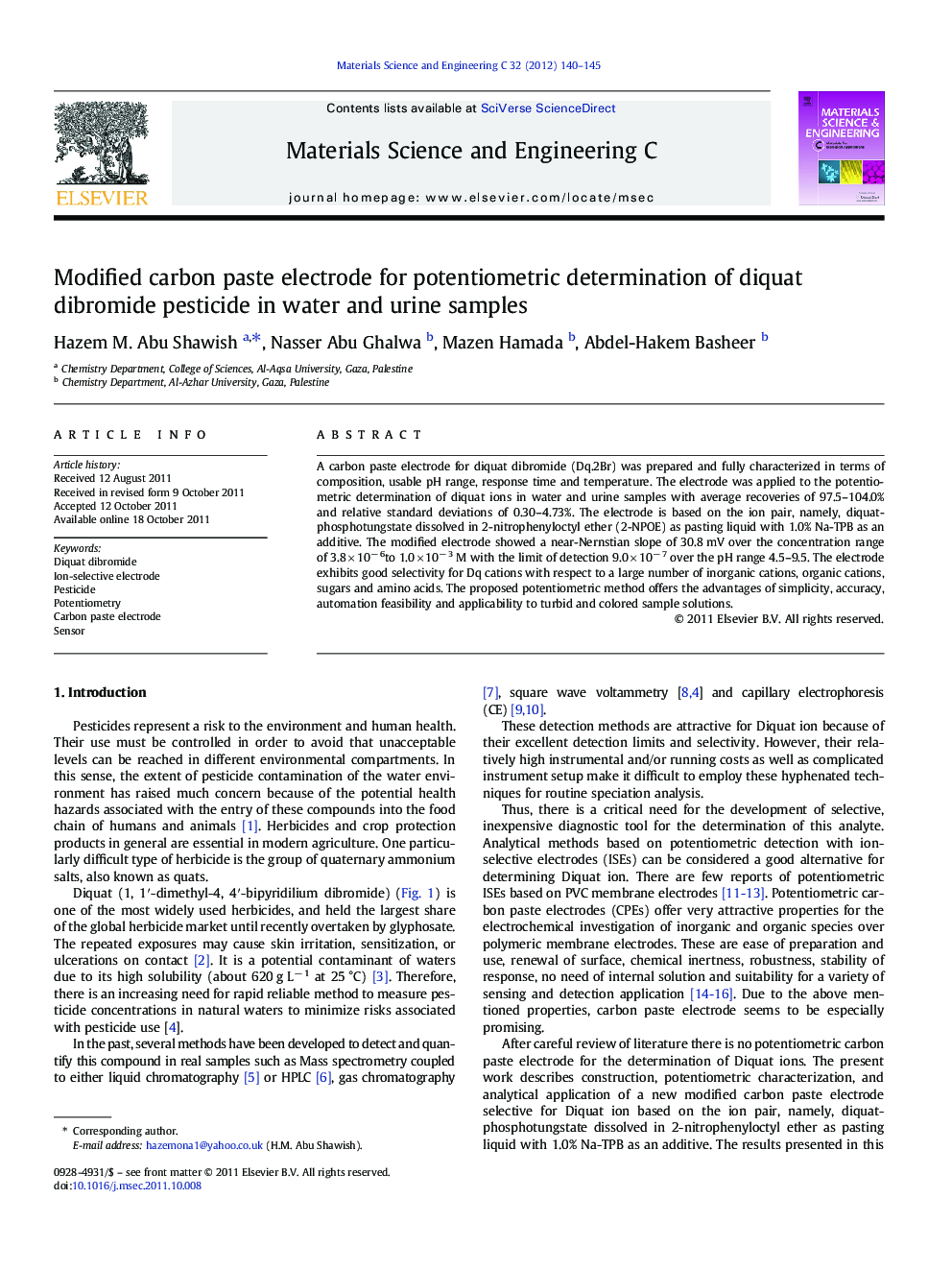| Article ID | Journal | Published Year | Pages | File Type |
|---|---|---|---|---|
| 1429562 | Materials Science and Engineering: C | 2012 | 6 Pages |
A carbon paste electrode for diquat dibromide (Dq.2Br) was prepared and fully characterized in terms of composition, usable pH range, response time and temperature. The electrode was applied to the potentiometric determination of diquat ions in water and urine samples with average recoveries of 97.5–104.0% and relative standard deviations of 0.30–4.73%. The electrode is based on the ion pair, namely, diquat-phosphotungstate dissolved in 2-nitrophenyloctyl ether (2-NPOE) as pasting liquid with 1.0% Na-TPB as an additive. The modified electrode showed a near-Nernstian slope of 30.8 mV over the concentration range of 3.8 × 10− 6to 1.0 × 10− 3 M with the limit of detection 9.0 × 10− 7 over the pH range 4.5–9.5. The electrode exhibits good selectivity for Dq cations with respect to a large number of inorganic cations, organic cations, sugars and amino acids. The proposed potentiometric method offers the advantages of simplicity, accuracy, automation feasibility and applicability to turbid and colored sample solutions.
► Diquat dibromide is used as one of herbicides. The repeated exposures may cause serious diseases. ► There is an increasing need for reliable method to measure diquat ion concentrations in real samples. ► A novel potentiometric carbon paste electrode (CPE) was developed. CPE offers very attractive properties. ► The electrode presented shows a wide concentration range, low detection limit and Nernstain slope. ► CPE proposed is useful in determination of diquat ion in drinking water and urine samples.
